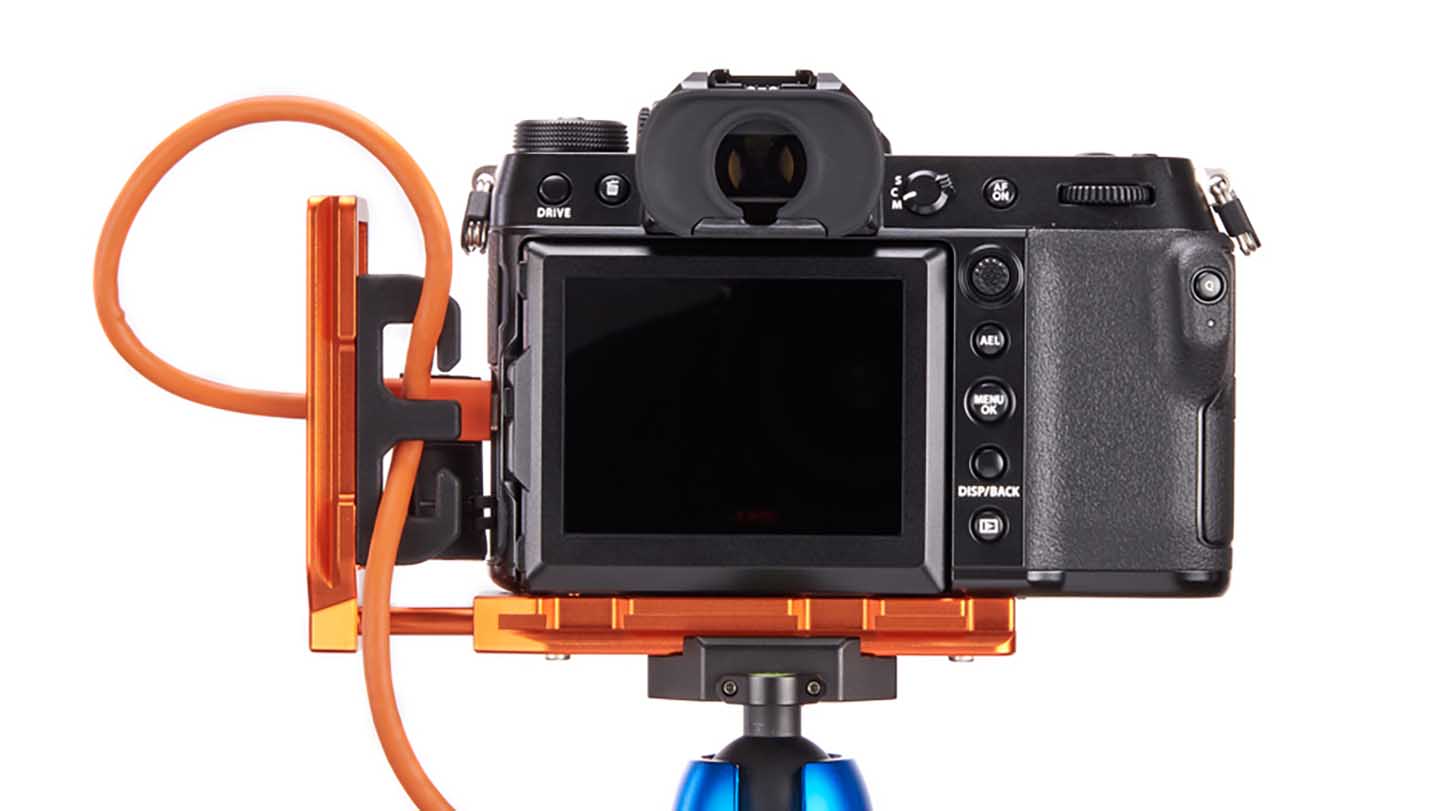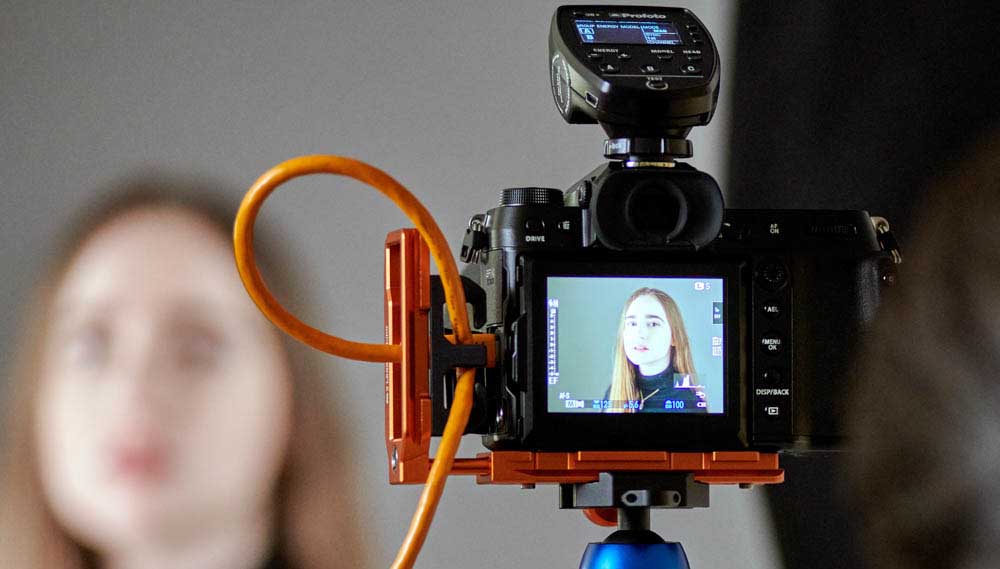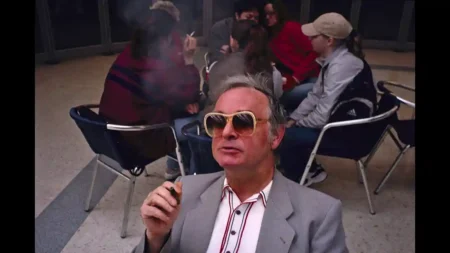3 Legged Thing’s machining is excellent so the Gracy looks and feels great. There are no rough edges as everything has a high-quality finish.
The 3 Legged Thing mounts quickly and easily onto the body of the Fujifilm GFX 100S or GFX 50S II with a 1/4-20 threaded connection screwing into the camera’s tripod bush. There’s also a pin that pops into a hole in the camera body to stop it twisting when a heavy lens is mount.
In it’s basic set-up, the Gracy hugs the camera neatly so that it doesn’t become bulky or obtrusive – although we opted for the bright orange (Copper) version so it stands out a mile.
Once the Gracy is attached to the camera, the L-bracket takes the place of a tripod quick release place and fits easily and snuggly onto a 3 Legged Thing Tripod head – or any other Arca-Swiss compatible head. In this instance, I used a 3 Legged Thing AirHed Neo 2.0 and I could quickly swap the camera between landscape and portrait orientation.
3 Legged Thing has made the horizontal plate of the Gracy long enough to give scope for adjusting the position of the camera on the tripod head, but it doesn’t extend as far as the battery compartment. That means that you can swap batteries without having to remove the Gracy.
However, the rubber covers that go over the microphone, headphone, HDMI , USB-C and sync terminals are difficult to access. That’s an issue for photographers as well as videographers as there isn’t a battery charger in the box with the GFX100S. Consequently, the USB-C port needs to be accessible for charging, but it can also be used for tethering the camera to a computer.
There are a couple of solutions for this problem. The simplest is to open the covers before the Gracy is fitted, but that means that the ports are exposed to the elements. Instead, 3 Legged Thing recommends that the supplied Allen key is used to loosen the bolts to enable the vertical plate to be moved away from the body of the camera before retightening everything.

This means that the Gracy doesn’t look such a neat fit on the camera but the connection ports are accessible and the cables are secure. However, if the camera is used in portrait orientation, it and the lens are higher up than they would be normally and the centre point of the image will shift relative to its position in landscape orientation.




